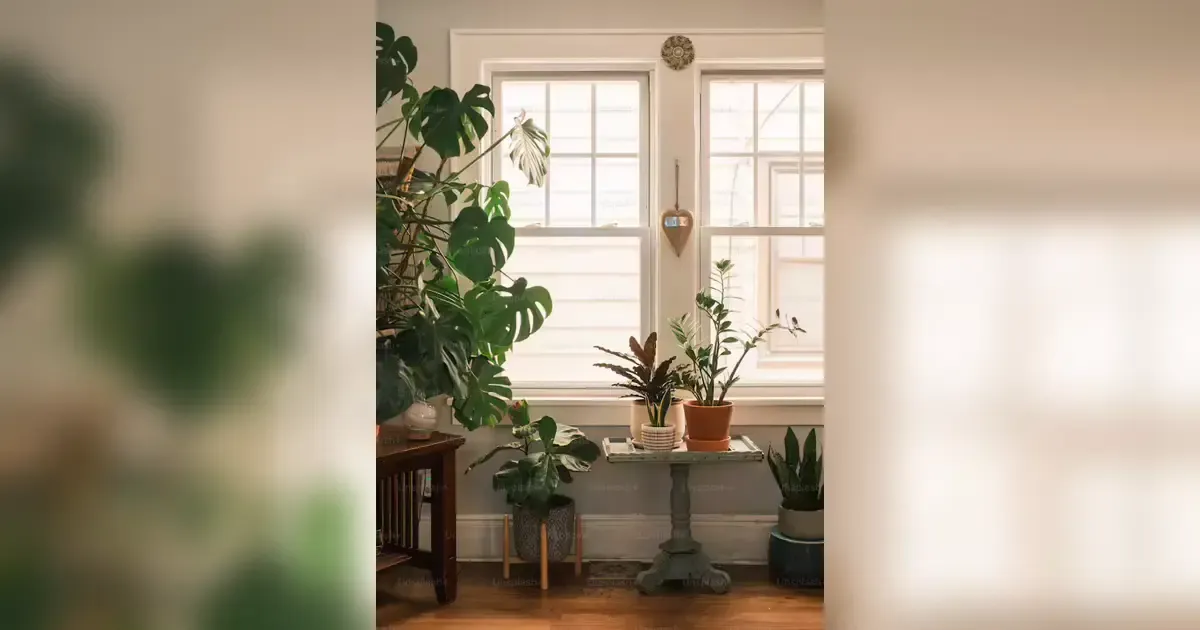Interior plants such as Snake plants, peace lily, spider plants improve home appearance as they act as air purifiers. These are easy on maintenance and help purify the indoor air – they are a blend of style and health....
Best Indoor Plants for Cleaner Air and Style
Introduction
Perennials can also be grown indoors and are one of the easiest ways to introduce a natural aesthetic to a home while providing health benefits. Also, it brings trendy color into the room and tends to be a life-giving portion of the area itself as well as many kinds of such release oxygen purifying toxic Free themes. As people spend much of their time indoors, enclosed plants are an effective means to cure those who have little time to spend outdoors to reduce stress and rejuvenate their spirits while refreshing and beautifying the indoor air around them. This guide focuses on some of the top indoor plants for clean air and style to give you choices depending on your room, light, and design.
Wind Plant (Sansevieria trifecta)
Wind plant, logically named Sansevieria, too recognized as mother-in-law's tongue, is one of the foremost excusing indoor plants. The snake plant could be a generally tall indoor plant characterized by or maybe erect takes off of a particular designed plan. This plant is exceptionally valuable in filtration by expelling discuss poisons like formaldehyde, xylene and benzene from the discuss. Wind plant is another of those plants that have night-photoperiod, meaning that whereas you're sleeping the plant is synthesizing oxygen. This makes it appropriate to be utilized in rooms. This plant is best suited in roundabout lighting and the water ought to dry up between watering as these plants are dry season tolerant and defenseless to root decay.
Peace Lily (Spathiphyllum)
The peace lily is an indoor plant that has earned its notoriety well through its white spathes and profound green foliage. It is very beautiful that complements its performance in scrubbing clean the air with substances such as ammonia, benzene and formaldehyde. The peace lilies grow well under low light which makes it a good plant for offices, the washrooms or areas with low light. They also need moderate irrigation, preferably once a week and can be watered some at times, hence suitable for novices. Not only do peace lilies help to clean up the air, their elegant flowers serve as an interesting design element, giving a room an air of refinement.
Spider Plant (Chlorophytum Como sum)
Spider plants are appreciated for their foliage that is rather trailing and arching with striped green and white. These hardy air purifying plants which can AWAY carbon monoxide, formaldehyde, and xylene gases, are ideal for houses with kids or pets. Spider plants can be grown in an array of light ranging from low light to bright indirect light; they are low maintenance. They also do not require a lot of propagation as they give the tiny ‘siderites or baby plant that can be transplanted in new pots. This ability to reproduce makes spider plants a low-cost solution to increase the number of plants present in your indoor space and ensure that the air being breathed in your home is clean.
Aloe Vera (Aloe barbadense miller)
Aloe vera is well-known for its mending properties and is additionally a fabulous air-purifying plant. Its gel-filled takes off contain compounds that can be utilized to alleviate burns, moisturize skin, and indeed treat minor cuts, including viable esteem past its embellishing offer. Aloe vera is viable in retaining benzene and formaldehyde, which are commonly found in family cleaning items. It favors shinning, backhanded light and rare watering, making it an extraordinary choice for sunny kitchens or living rooms. It’s one of a kind, spiky clears out include a curiously surface to indoor spaces, and its wellbeing benefits make it a useful expansion to your domestic.
Boston Fern (Nephrologist exultate)
Boston greeneries are among the foremost successful plants for humidifying the discuss, as they discharge dampness through transpiration. Their lavish, fluffy fronds are perfect for including delicate quality and a touch of style to indoor spaces. Boston plants are especially great at evacuating formaldehyde and xylene from the discuss. Be that as it may, they do require a bit more care, flourishing best in a muggy environment with roundabout light. Customary moistening and keeping the soil sodden (but not wet) are key to keeping Boston greeneries sound. They are idealizing for washrooms or kitchens, where mugginess levels are by and large higher, making it less demanding to preserve their rich appearance.
Rubber Plant (Ficus elastic)
Rubber plants have large, green leaves, and give the impression of lush tropical Ness, which makes them perfect for modern décor. They come in handy especially during purification of the interior environment from naturally occurring gases like formaldehyde. The rubber plant actually thrives best in bright, indirect light but it can also grow in low light areas. They need only average irrigation and the soil in their pots must be allowed to dry a little between watering. It’s pretty wide leaves, especially one that is so rubber plant’s dramatic deep green which is modern and sophisticated adding some elegance in the living spaces and working places.
English Ivy (Hedera helix)
English ivy is highly flexible, often used in hanging baskets, trailing plant just as well as in training the vines to climb indoors on trellises. As a result of its formation small and dark green leaves give a quite classic outlook, it is also believed to take mold spores in the air which makes it a good idea to use in the bathroom or any other humid zone. English ivy ought to be positioned in an area with medium light, and it prefers generous watering, the soil ought to be wet but not wet to the touch. This plant propagates through tip cutting and can therefore be used at the top most shelves or hanging containers as it forms a good green cover and appearance.
Bamboo Palm (Camaiore satirize)
The bamboo palm is an erect plant with beautiful appearance and is well suited for bringing the tropics indoors. Swathed in thick soft feathers its fronds are able to filter out pollutants such as formaldehyde, benzene and trichloro0ethylene from the air making it much healthier to inhale. Bamboo palms are small plants that adapt best too low to medium light which is perfect for rooms with limited access to natural light. They need to be watered frequently and like humidity so spraying the foliage is conducive. Because of its delicate touch, it is more suitable to be placed in living rooms, offices or in the entry area because it brings out firmness and height.
Golden Pathos (EpiPen aurum)
Golden pathos or the ‘devil’s ivy’ is a real work- horse when it comes to the world of house plants and propagates easily as well. It has jagged edges and has the shape of a heart; the range of colors is from bright green to yellow. It is proved that golden pathos effectively filters out the toxins like formaldehyde, benzene and xylene from the indoor air. Low light ability, low requirement for water – this plant can adapt to the different environment, and easy to care. Trailing varieties of this plant are suitable for hanging baskets, shelves, or as a spikey that falls over the edge of a table.
Dracaena (Dracaena marginata)
Decorative plants known as Dracaena belong to an extensive range of distinct forms and scales, and the main accent is made by the rich and fancy leaves which make the surroundings look like tropic Isle. They are even very efficient in the following volatile organisms including inorganic formaldehyde, benzene, and trichloroethylene. They do best in indirect light and require adequate water—an aspect that makes them easy to take care of. Due to their vertical development, they provide an opportunity to be placed in the corner or in a small area; moreover, the peculiar foliage will become the highlight of the interior. In a way that its types, that include different varieties, provide an opportunity to personalize its color as well as its structure.
Philodendron (Philodendron spp.)
Most people will agree that Philodendrons belong to the category of classic houseplants which have numerous green, round/heart-shaped leaves and are relatively easy to care for. It is used in absorbing toxic gaseous materials such as formaldehyde and thus can be useful when it comes to cleaner air. Most philodendrons are trailing or upright types, so they can be planted at any location of choice. Frost tender, they prefer indirect bright light and moderate watering. These plants are ideal for those houses that have low levels of light and because of its easy nature it is loved by most novice plant lovers.
Chinese Evergreen (Aglaonema)
Chinese evergreens can be differentiated with respect to color which ranges between green, to silver red. It is most effective in removing the formaldehyde and benzene gases from your indoor environment as well as enliven interior design collaborations. Chinese evergreens prefer low to medium light, and are quite drought tolerant, making them great for spaces with less, and often forgotten, light. They both have unique foliage and assuming their surroundings are regulated by their owners they can thrive in nearly any household. They can be installed in any room in a home.
Conclusion
Furniture plants not only offer room with the right appearance but also the indoor air within the compound is purified while at the same time enhancing the style of your furniture. Many people have a lot of options, some being Snake plant or spider plant since they do not die easily, rubber plant and even the Boston fern among other plants depending on the preference of the owner, the amount of light the plant can get and the amount of time the owner has to dedicate to the plant. The truth about these plants is that they do have a natural advantage of purging air toxins, eliminating bacteria, and enriching the oxygen content of the air making your home air healthier. Selecting the appropriate type of foliage to have in the homes provides not only the beautification of the living space but it also lessens the impact of the indoor pollution and can further enrich the inhabitants live. Living on indoor plants is one of the simple and efficient means of fighting stress and improving the appearance of the living environment while at the same time moderating the climate of the rooms.


























